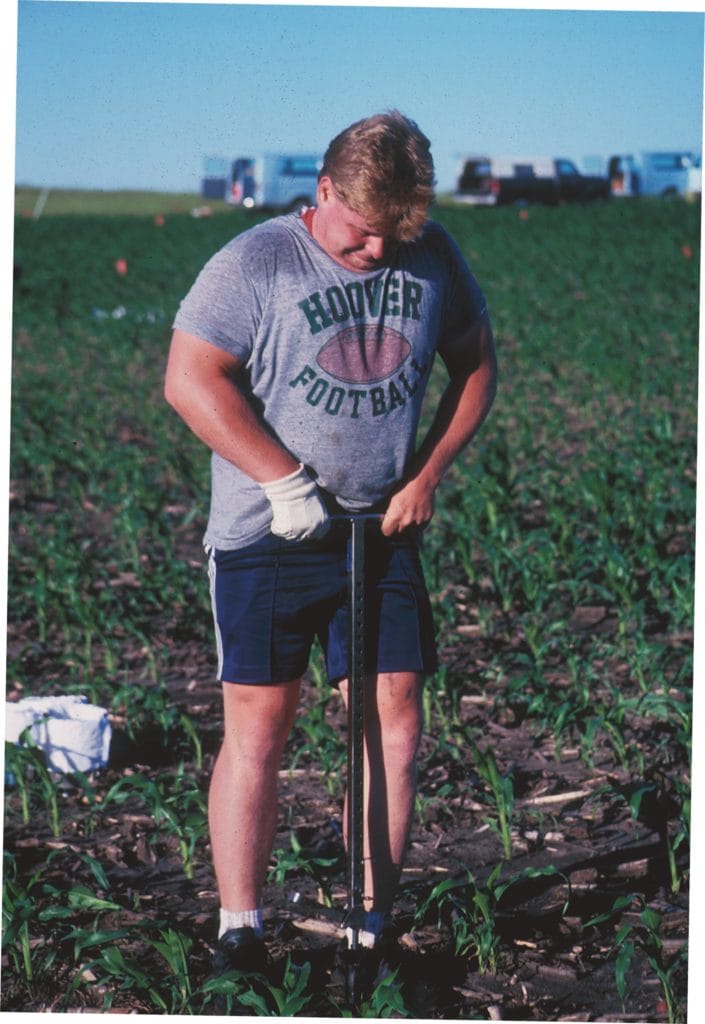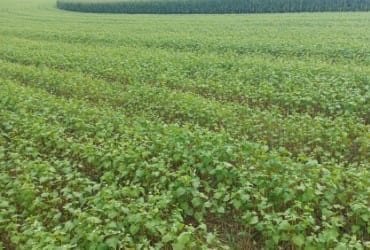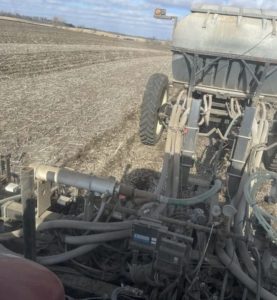Don’t Forget About Phosphorus and Potassium
Phosphorus and potassium don’t often receive the same level of attention as nitrogen when discussing crop fertility needs, but they are similarly used in large quantities by crops and are also necessary for optimum plant health and yield.
In a low commodity price environment, reconsidering phosphorus and potassium fertilization rates might provide an avenue for lowering input costs. Midwest soils contain large amounts of both nutrients and may provide adequate amounts of phosphorus and potassium in any one year, or over many cropping seasons. PFI farmers are finding ways to manage phosphorus and potassium resulting in both economic and environmental benefits.
The P and K Conundrum
The total phosphorus concentration of the upper six inches of most Iowa soils averages near 0.05%, or a total weight of nearly 1,000 lb/ac of phosphorus. Potassium can be found in even greater amounts: as much as 5 – 10,000 lb/ac or higher in the ‘plow layer.’
Considering the amount of phosphorus and potassium naturally found in Iowa soils, it is reasonable to question why we need to purchase and add these nutrients as fertilizer.
The answer is that while both nutrients are found in large supply in most Midwest soils, only small amounts are available at any one time to our crops. The pool of plant-available phosphorus is so small, it likely needs to completely replenish itself more than once daily (especially in the root zone) during the growing season.
It is well known bacteria and fungi are vitally important in converting phosphorus and potassium into plant-usable forms and have developed long-standing symbiotic relationships with plant communities. However, soils may not be able to move enough phosphorus and potassium, or convert unavailable forms of nutrients to a form usable by crops quickly enough, hence the reliance on purchased fertilizers.
Begin With Soil Sampling
Limiting deficiencies, or abundance of available phosphorus and potassium, are not necessarily visually obvious. The only sure way to determine the need for additions of phosphorus or potassium fertilizers begins with regular soil testing.
Such testing categorizes the ability of the soil to supply, or resupply, available phosphorus or potassium to the particular crop grown during the season. While this resupply depends on the complex chemistry of your soil, testing can give you predictive ability whether your crop will be limited, or not, in phosphorus or potassium nutrition.
Iowa State Extension categorizes soil phosphorus and potassium levels as Very Low, Low, Medium (Optimum), High or Very High. For example, a result of ‘Very Low’ potassium would indicate your crop would likely be limited in growth due to lack of available potassium. Also, each test category has a probability of economic yield response where fertilizer is applied based on numerous field studies.
Probability of Yield Response Within Each Phosphorus and Potassium Soil Test Category
| Very Low (VL) | Low (L) | Medium or Optimum (O) | High (H) | Very High (VH) |
| 80% | 55% | 25% | 5% | <1% |
Table is from Iowa State University publication PM1688. Note that a yield response should not be conflated with higher net income.
It’s clear soils testing in the High or Very High categories are unlikely to have a profitable yield increase after adding phosphorus and potassium fertilizer. Iowa State University recently updated their phosphorus and potassium fertilizer recommendations (PM 1688) based on recent field research. Reproduced below are the phosphorus and potassium fertilizer recommendations for corn by testing category.
Recommended Phosphorus and Potassium Rates for Corn Grain Using Soil Test Results
| Soil Test Category | ||||||
| Very Low | Low | Optimum | High | Very High | ||
|
Recommended rates |
P2O5 (lb/ac) | 120 | 85 | 67 | 0 | 0 |
| K2O (lb/ac) | 145 | 110 | 46 | 0 | 0 | |
Table is from Iowa State University publication PM1688.
Iowa State costs of crop production estimates for 2024 assigned about $80 per acre to phosphorus and potassium fertilizer for corn or soybeans. Statewide soil tests from Iowa State Soil Testing Lab from 2006 – 2010 showed about 59% of phosphorus and 54% of potassium tests were categorized as High or Very High, meaning that most fields tested during that period did not require any phosphorus and potassium at all.
Fertilizer additions to those fields would likely have had no agronomic benefit, hence lowered profitability and increased risk of excess phosphorus reaching aquatic systems. Avoiding phosphorus and potassium fertilization for tested soils categorized as ‘High’ or ‘Very High’ would be an easy and profitable decision.
Exceptions to the Rule?
It has been proposed that particularly healthy (biologically active) soils may be capable of very rapid phosphorus and potassium nutrient uptake by high-yielding, modern crop varieties without the need for additional fertilizer. Dale Schlarmann, PFI row crop farmer from the Dubuque, Iowa, area, posits this is the case on his farm. Dale has used no-till methods for 30 years and cover crops ahead of all his corn and bean acres for over a decade.
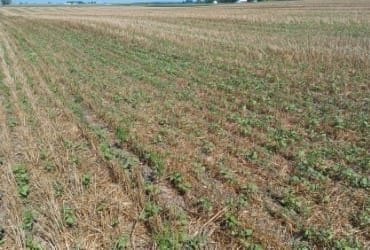
Dale Schlarmann’s cover crop of buckwheat, oats, radishes and turnips after rye, planted August 2, 2024.
When he began farming, he exclusively used standard soil testing and still does about every five years. More recently, he has added the Haney soil health test and an in-season plant sap test.
By focusing on his soil health, Dale cut back his recommended phosphorus and potassium fertilizer rates initially by half. In the last two years, he has applied no phosphorus or potassium to his corn-soybean rotation, even though the Haney test recommended about 40 lb/ac each of phosphorus and potassium. Sap testing both crops late summer has shown no deficiency in either nutrient, and yields have not fallen.
His standard soil testing is continuing to show improvement in phosphorus and potassium categories despite eliminating fertilizer applications. Dale says, “I’m fairly confident I will never need to apply phosphorus again.” He feels the primary key to maintaining his soil health is maximizing the time roots are growing in the soil.
PFI member Scott Richert has had a similar experience on his farm in Greshem, Nebraska, where he hasn’t applied phosphorus or potassium in the last three years. He feels through cover cropping all his 2300 acres and grazing as many as possible, his soil is functioning at a level that provides adequate amounts of soluble phosphorus to his crops.
Ahead of corn, Scott is using a rye and vetch cover crop mix. Ahead of soybeans, he uses rye and is experimenting with camelina as well. Like Dale, Scott feels traditional soil tests don’t always index biologically active soils properly and may overstate the need for purchased fertility.
Keeping Phosphorus in Place
Phosphorus and potassium are relatively stable in the soil, and their removal is usually through harvesting of grain (or other plant parts) and erosion of the soil itself. When phosphorus is washed (or less often leached) from farm fields into waterways during rain or snow melt, it causes serious water quality problems.
Through extensive cover cropping, Dale feels he is protecting his phosphorus and potassium pools by reducing erosion. He calculates he has 3,100 lb/ac of total phosphorus in the top six inches of his soil.
Another PFI member, Ryan Johnson, who farms near Cherokee, Iowa, also protects soil using cover crops. He generally applies maintenance levels of phosphorus and potassium fertilizer.
Ryan currently uses a no-till and strip-till system and strip-tills dry phosphorus and potassium fertilizer with his anhydrous ahead of corn. His fertilizer cart and anhydrous tank form a train, of sorts.
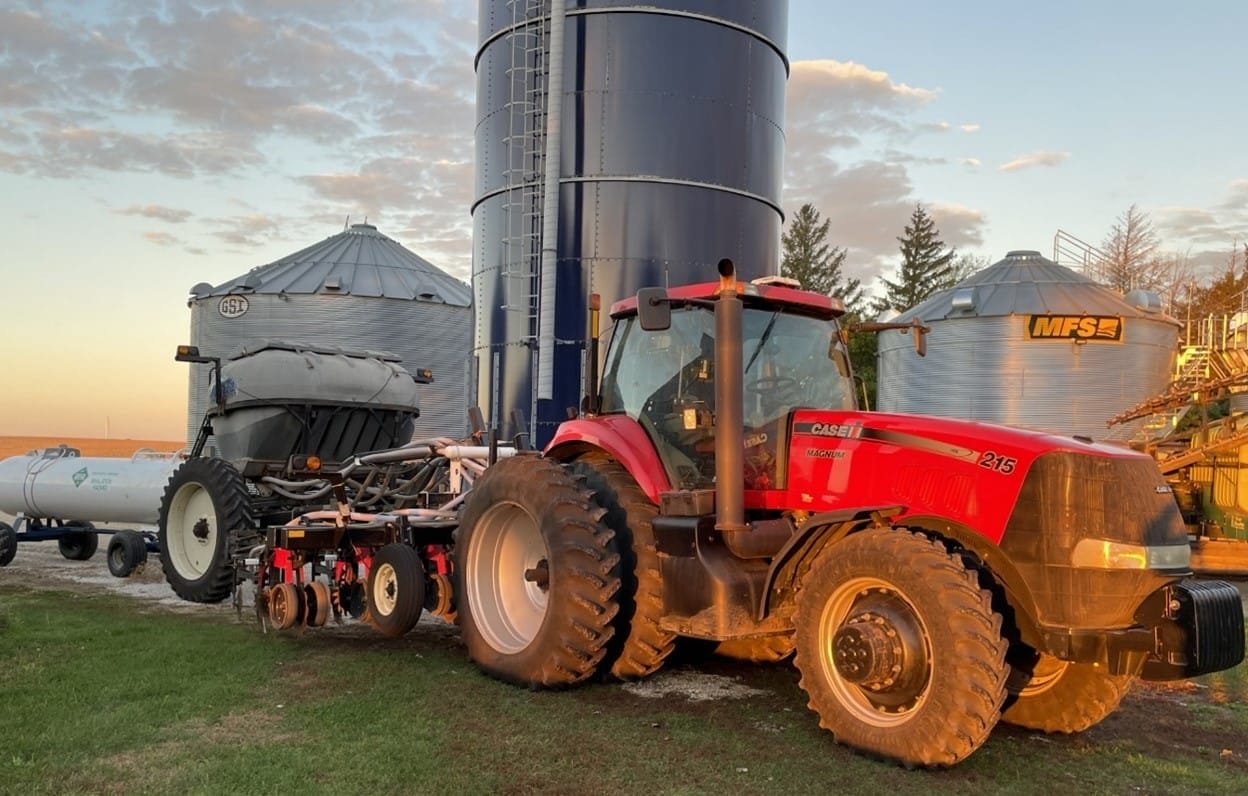
Ryan Johnson’s fertilizer ‘train’ – anhydrous tank behind his 9-ton Montag fertilizer cart and eight-row strip-till tool.
The result is low soil disturbance and placement of fertilizer below the soil surface leading to reductions in potential phosphorus and potassium loss from moving soil.
It works out that each cart load requires two tanks of anhydrous. While he admits it is a little slow moving through the field, he likes eliminating multiple field passes.
“When you’re done, you’re done,” he says. In soybean years, he broadcasts his phosphorus and potassium, but variable rate applies them based on soil testing to maximize profit and minimize overapplication.

